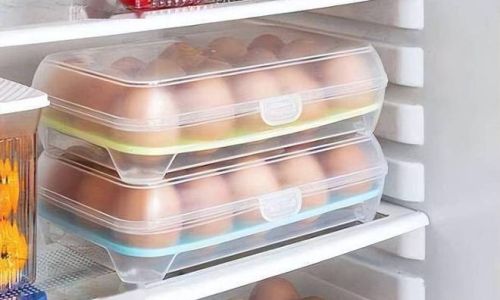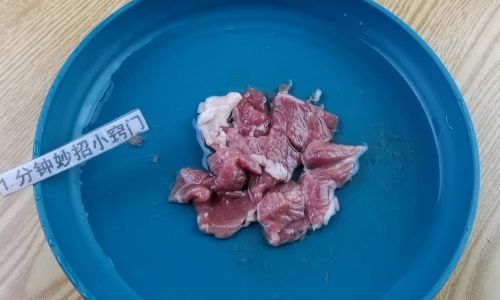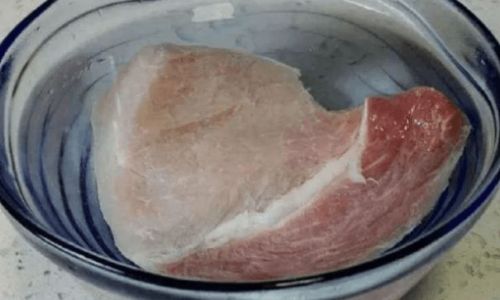Table of content
Freezing meat is a common practice in modern households, offering a convenient way to extend shelf life and reduce food waste. However, the question of whether fresh-keeping bags—commonly used for short-term refrigeration—are suitable for freezing meat sparks confusion. This article delves into the science, risks, and best practices of freezing meat, clarifying whether fresh-keeping bags can safely fulfill this role.
Understanding Fresh-Keeping Bags vs. Freezer Bags
To address the query, it is essential to distinguish between fresh-keeping bags and freezer bags. While both are plastic storage solutions, their designs serve different purposes.

Fresh-Keeping Bags:
- Purpose: Designed for short-term storage of perishables like fruits, vegetables, and snacks in refrigerators.
- Material: Typically made from thin, flexible polyethylene (PE) or similar plastics.
- Thickness: Usually range from 0.5 to 1 mil (1 mil = 1/1000th of an inch), making them lightweight and easy to seal.
- Features: Often lack airtight seals or moisture-resistant coatings, prioritizing convenience over durability.
Freezer Bags:
- Purpose: Engineered for long-term freezing of liquids, meats, and prepared meals.
- Material: Thicker, denser plastics like low-density polyethylene (LDPE) or nylon blends.
- Thickness: Typically 2–3.5 mils, providing resistance to punctures, tears, and moisture penetration.
- Features: Include reinforced seams, zip-top closures, and sometimes a white patch for labeling.
The key difference lies in their ability to withstand extreme cold and prevent freezer burn—a common issue caused by air exposure leading to dehydration and oxidation.
The Science Behind Freezing Meat
Freezing meat slows bacterial growth and enzymatic activity, preserving quality. However, the process is not without challenges:
- Ice Crystal Formation: When meat freezes, water within its cells forms ice crystals. Rapid freezing (e.g., in a -0°F freezer) minimizes large crystal growth, preserving texture. Slow freezing in standard refrigerators (0°F) may result in larger crystals, damaging cell structures and causing thawed meat to become mushy.
- Oxidation: Exposure to air accelerates fat rancidity and color changes, even in frozen meat.
- Dehydration: Moisture loss through improper packaging leads to freezer burn, manifesting as grayish-brown patches and a dry, leathery texture.
Proper packaging mitigates these issues by creating a barrier against air and moisture.
Risks of Using Fresh-Keeping Bags for Freezing Meat
While fresh-keeping bags may seem cost-effective, their use for freezing meat poses several risks:

a. Freezer Burn
Thin fresh-keeping bags allow air and moisture to escape, leading to dehydration. Over time, this results in freezer burn, which alters texture and flavor. A study by the Journal of Food Science found that meats stored in non-airtight containers lost up to 30% more moisture than those in vacuum-sealed bags.
b. Off-Flavors and Odors
Plastics in fresh-keeping bags may absorb odors from the freezer or impart chemical tastes to meat, especially during prolonged storage. Freezer bags, designed with food-safe liners, reduce this risk.
c. Structural Failure
The thin material of fresh-keeping bags is prone to tearing under the weight of frozen meat or when stacked. This can lead to leaks, contamination, and freezer odor absorption.
d. Shorter Shelf Life
The USDA recommends storing raw meat in freezer bags for 6–12 months. Fresh-keeping bags may reduce this period by 40–60% due to inferior barrier properties.
Best Practices for Freezing Meat
If freezer bags are unavailable, here’s how to optimize fresh-keeping bags for freezing:
a. Double Bagging
Wrap meat tightly in plastic wrap or parchment paper, then place it in a fresh-keeping bag. Add a second bag for extra protection.

b. Remove Excess Air
Use a straw to suck out air before sealing, or submerge the bag in water (up to the seal) to force air out.
c. Label Clearly
Mark the bag with the date and contents using a waterproof marker.
d. Store Correctly
Place bags flat in the freezer to ensure even freezing and prevent thawing when stacked.
However, these methods are stopgaps. Investing in freezer bags or vacuum sealers is advisable for long-term storage.
Alternatives to Fresh-Keeping Bags
For optimal results, consider these alternatives:
a. Vacuum Sealers
These devices remove air entirely, extending meat shelf life to 2–3 years. They are ideal for bulk purchases or hunters.

b. Aluminum Foil or Freezer Paper
Heavy-duty aluminum foil or freezer paper (coated with plastic) provides a moisture-resistant barrier. Wrap meat tightly, then seal with tape.
c. Plastic Containers
Rigid, airtight containers prevent freezer burn and are reusable. Choose BPA-free options and leave ½-inch headspace for expansion.
d. Butcher Paper
A traditional method, butcher paper allows some airflow, making it less effective than modern solutions. Combine with plastic wrap for better results.
Thawing and Using Frozen Meat
Proper thawing is as critical as freezing:
- Refrigerator Thawing: Slowest but safest method (24 hours per 5 pounds).
- Cold Water Thawing: Submerge sealed meat in cold water, changing every 30 minutes (1 hour per pound).
- Microwave Thawing: Use defrost settings, cooking immediately after.
Never thaw meat at room temperature, as this promotes bacterial growth.
Environmental and Economic Considerations
While freezer bags are recyclable in some areas, single-use plastics contribute to waste. Reusable silicone bags or beeswax wraps offer eco-friendly alternatives. Economically, freezer bags cost $0.10–$0.30 per unit, while vacuum sealers require a higher initial investment but save money long-term.

Conclusion
Fresh-keeping bags are inadequate for freezing meat due to their thin design, which risks freezer burn, structural failure, and reduced shelf life. While emergency workarounds exist, investing in freezer bags, vacuum sealers, or airtight containers ensures safety and quality. Proper freezing and thawing techniques further preserve meat’s taste and texture, making every meal a testament to efficient food storage.
By understanding the science behind freezing and prioritizing the right tools, households can minimize waste, save money, and enjoy delicious, wholesome meals long after purchase. Whether you’re a casual cook or a meal-prep enthusiast, the choice of packaging matters—and your freezer (and taste buds) will thank you.






0 comments